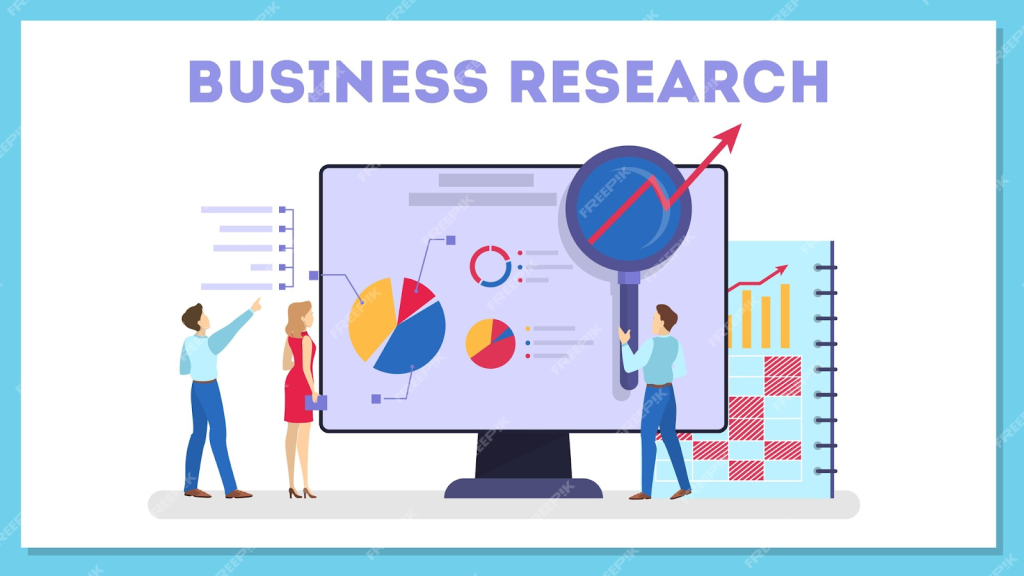In the fast-paced world of business, change is the only constant. Market fluctuations can make or break a company, and organizations that navigate these waves successfully often come out on top. Sales wave research is an essential component of this strategic approach.
In this comprehensive guide, we will delve into the intricacies of sales wave research, understanding what it is, why it matters, and how businesses can harness its power to ride the ups and downs of the market.
Let’s Begin!
Table of Contents
- What is Sales Wave Research?
- Key Factors of Sales Wave Research
- The Importance of Sales Wave Research
- Collecting and Analyzing Data
- Building a Sales Wave Research Team
- Interpreting Sales Waves
- Applying Sales Wave Research to Marketing Strategies
- The Role of Technology in Sales Wave Research
- Case Studies: Success Stories in Sales Wave Research
- Challenges and Ethical Considerations
- Future Trends in Sales Wave Research
- Conclusion
- Frequently Asked Questions (FAQs)
What is Sales Wave Research?
Before we dive into the specifics, it’s essential to have a clear understanding of what sales wave research entails.
Essentially, sales wave research is the process of studying and analyzing market fluctuations and consumer buying behaviour to make informed decisions that drive sales and revenue.

Let me explain you sales wave research in simple terms.
In sales wave research, customers who have already tried the product for free or at no cost in the beginning are reoffered the product, or a competitor’s product, at quite low prices.
Consumers may get the reoffered product for as many as three to five times (sales waves), with the company observation on how many customers pick that company’s product again and their reported level of satisfaction.
In order to determine the effect of advertising on repeat purchases, sales-wave research may also involve exposing customers to one or more advertising concepts.
It encompasses various elements, including market trends, consumer preferences, competitor activities, and economic factors, among others.
Sales analysis research is not just about collecting data; it’s about translating that data into actionable insights.
In the following section, we will explore the key components of sales wave research.
Key Factors of Sales Wave Research
Market Trends
Identifying and tracking market trends is essential for understanding the ever-changing landscape of your industry.
These trends can be driven by technological advancements, consumer behaviour shifts, economic conditions, or other factors. Staying ahead of these trends is crucial for a business’s survival.
Consumer Preferences
Understanding what your customers want and how their preferences evolve over time is a fundamental aspect of sales analysis research. It involves gathering data on consumer behaviour, feedback, and demographics.
Competitor Activities
Observing what your rivals are doing can yield insightful information. This includes analyzing their strategies, product launches, pricing models, and customer engagement tactics.
Economic Factors
Economic conditions can significantly impact consumer spending patterns. Factors such as inflation, unemployment rates, and interest rates can influence how much consumers are willing to spend.
Sales wave research involves monitoring these economic indicators and adjusting strategies accordingly.
Let’s see why sales wave research is necessary to maintain your business health.
The Importance of Sales Wave Research
- Why is sales market research so critical for businesses? To answer this question, let’s consider the challenges and opportunities that market fluctuations present.
Adaptability
The corporate environment is always changing. One of the main characteristics that set successful businesses apart from unsuccessful ones is their capacity for change. Sales wave research equips businesses with the insights needed to make timely adjustments to their strategies.
Risk Mitigation
Market fluctuations often bring risks, but they also present opportunities. Through research, businesses can identify potential threats and seize advantageous moments. This proactive approach helps mitigate risks and capitalize on emerging trends.
Enhanced Decision-Making
Informed decision-making is the foundation of business success. Sales analysis research provides the data necessary for sound, well-informed decisions that drive growth and profitability.
Customer-Centricity
Understanding consumer preferences is vital for delivering products and services that meet their needs. Sales market research helps businesses tailor their offerings to align with customer demands, enhancing customer satisfaction and loyalty.
You can also gain this customer-centricity quality in your sales team or within yourself by enrolling in the sales training program of Yatharth Marketing Solutions – best sales training company.
Competitive Advantage
Keeping an eye on competitors and staying ahead of market trends gives businesses a competitive edge. This advantage allows companies to stay relevant and outperform their rivals.
Collecting and Analyzing Data
Effective sales wave research relies on the collection and analysis of data. This chapter delves into the methods and tools businesses can use to gather and interpret information.
Data Sources
Sales analysis research involves sourcing data from various channels. This can include customer surveys, social media insights, sales data, competitor analysis, and industry reports. The more diverse the data sources, the more comprehensive the research will be.
Data Collection Methods
Surveys, questionnaires, interviews, and focus groups are some of the primary data collection methods used in sales market research. In addition, advanced technologies like web scraping, AI-driven analytics, and machine learning can provide deeper insights.
Data Analysis Tools
The process of turning unprocessed data into insightful knowledge is known as data analysis. Businesses can employ data analysis tools like Excel, statistical software packages, and specialized customer relationship management (CRM) systems to make sense of the collected data.
Qualitative vs. Quantitative Data
Both qualitative and quantitative data are essential in sales wave research. Qualitative data provides context and insights into customer sentiments, while quantitative data offers numerical evidence and statistical trends.
Building a Sales Wave Research Team
To execute successful sales wave research, organizations need a dedicated team of professionals who understand the nuances of data collection and analysis. This sector explores the key roles and skills required for such a team.
Data Analysts
Data analysts play a crucial role in extracting meaningful insights from collected data. They should be proficient in statistical analysis, data visualization, and data interpretation.
Market Researchers
Market researchers are responsible for studying market trends, consumer preferences, and competitor activities. They need to be skilled in conducting surveys, analyzing industry reports, and staying updated on market developments.
Customer Insights Specialists
Understanding customer behaviour is central to sales wave research. Specialists in customer insights focus on gathering and interpreting data related to customer preferences and behaviour.
Technologists
In the age of data-driven decision-making, technologists who can work with advanced data analysis tools and platforms are indispensable.
Project Managers
Effective project management ensures that sales wave research projects are completed on time and within budget. Project managers coordinate the efforts of the research team, ensuring a smooth workflow, and effectively enhance the sales team performance metrics.
Interpreting Sales Waves
Sales waves are the ebb and flow of consumer demand and market conditions. Interpreting these waves is a complex process that requires a nuanced understanding of the data and a keen eye for patterns. This chapter provides insights into how businesses can interpret sales waves effectively.
Recognizing Patterns
Identifying recurring patterns in sales waves is essential. Patterns can be influenced by seasonality, economic conditions, or consumer behaviour. Recognizing these patterns allows businesses to anticipate fluctuations and adapt accordingly.
Segmentation
Not all customers or market segments respond in the same way to market fluctuations. Effective segmentation enables businesses to tailor their strategies to specific customer groups.
Forecasting
Data analysis can help in forecasting future trends. Through predictive analytics, businesses can make informed decisions regarding inventory management, pricing strategies, and marketing campaigns.
Scenario Planning
Preparing for different scenarios is a proactive approach to managing sales waves. Businesses can develop contingency plans for best-case and worst-case scenarios to ensure resilience in turbulent times.
Applying Sales Wave Research to Marketing Strategies
Sales wave research is not an isolated activity; it should be integrated into an organization’s marketing strategies. In this chapter, we explore how to apply the insights gained from sales wave research to marketing efforts.
Content Marketing
Content should be tailored to address the needs and preferences of target customers. Sales market research can inform the creation of content that resonates with the audience.
Product Development
Research insights can guide product development by helping businesses understand what features or enhancements are most sought after by consumers.
Pricing Strategies
Market fluctuations often necessitate adjustments in pricing. Sales wave research can help in setting competitive and dynamic pricing strategies.
Promotions and Campaigns
Knowing when to launch promotions or marketing campaigns can make a significant difference. Sales wave research can identify the most opportune times for these activities.
The Role of Technology in Sales Market Research
The digital age has transformed the way we conduct sales wave research. In this chapter, we discuss the role of technology in enhancing the effectiveness of this research.
Big Data and Analytics
The volume of data available today is enormous. Big data analytics tools can process and analyze this data to uncover insights that were previously hidden.
AI and Machine Learning
Artificial intelligence and machine learning algorithms can identify patterns and trends in data at a level of detail that humans can’t match. This enables businesses to make more accurate predictions and informed decisions.
CRM Systems
Customer relationship management systems provide a centralized hub for collecting and managing customer data. They also offer insights into customer behaviour and preferences.
Social Media Listening Tools
Monitoring social media platforms allows businesses to keep tabs on what customers are saying about their products and brand. This real-time feedback is invaluable in sales wave research.
E-commerce Analytics
For businesses operating online, e-commerce analytics tools provide data on website traffic, customer behaviour, and conversion rates.
Case Studies: Success Stories in Sales Wave Research
To illustrate the practical applications of sales wave research, this chapter presents a selection of real-world case studies. These examples showcase how companies have leveraged research to navigate market fluctuations successfully.
Amazon

The e-commerce giant uses advanced data analytics to personalize product recommendations, optimize pricing, and forecast demand accurately.
Netflix

Netflix employs data-driven insights to recommend content to subscribers, create hit shows, and optimize its user interface for maximum engagement.
Zara

This fast-fashion retailer utilizes a flexible supply chain and data analytics to quickly respond to changing consumer preferences, minimizing excess inventory and maximizing sales.
McDonald’s

The fast-food giant uses sales wave research to adjust its menu offerings and promotional campaigns to match regional tastes and preferences, leading to increased sales.
Challenges and Ethical Considerations
While sales wave research offers numerous benefits, it also presents certain challenges and ethical considerations that businesses must address. This chapter highlights some of the issues that organizations should be aware of.
Data Privacy
The collection and use of customer data must comply with data privacy regulations, such as the General Data Protection Regulation (GDPR) and the California Consumer Privacy Act (CCPA).
Data Security
Protecting the data collected is paramount. Businesses need robust cybersecurity measures to safeguard customer information from breaches.
Bias in Data
Biases can creep into data collection and analysis, leading to skewed insights. It’s essential to be aware of and mitigate these biases.
Transparency
Customers should be informed about the data businesses collect and how it’s used. Transparency is critical for maintaining trust.
Ethical Use of Data
Businesses should use data ethically and responsibly, ensuring it’s not misused for discriminatory purposes or to exploit vulnerabilities.
Future Trends in Sales Wave Research
The field of sales wave research is continually evolving. In this final chapter, we explore the future trends and innovations that will shape the practice of sales market research.
AI and Predictive Analytics
AI will play an even more significant role in predicting market trends and consumer behaviour, leading to more accurate forecasting.
Real-time Data
With the advent of the Internet of Things (IoT), businesses will have access to real-time data, enabling them to make immediate adjustments to their strategies.
Blockchain for Data Security
Blockchain technology offers enhanced data security and transparency, making it an attractive option for businesses handling sensitive customer data.
Sustainability and Ethical Consumerism
Sales wave research will increasingly focus on understanding consumer demand for sustainable and ethically produced products.
Personalization
Advances in personalization technology will allow businesses to deliver highly customized experiences to individual customers.
Conclusion
Sales wave research is the compass that guides businesses through the ever-changing tides of the market. It empowers organizations to anticipate fluctuations, adapt to new trends, and thrive in dynamic environments.
By assembling the right team, utilizing technology, and staying mindful of ethical considerations, businesses can harness the power of sales wave research to secure their future in a rapidly evolving business landscape. In doing so, they position themselves to ride the waves of change and emerge stronger than ever.
Who can benefit from Sales Wave Research?
Sales Wave Research is beneficial for businesses of all sizes and industries. It caters to retailers, e-commerce companies, manufacturers, and service providers looking to improve their sales strategies.
How can I access Sales Wave Research reports and insights?
To access Sales Wave Research, you can subscribe to our service, and you will receive regular reports and updates. You can also access insights through our web portal or receive customized reports based on your business needs.
What types of data are analyzed in Sales Wave Research?
Sales Wave Research analyzes a wide range of data, including historical sales data, market trends, consumer behaviour, economic indicators, and competitive analysis, among others.
Can Sales Wave Research help me make better sales forecasts?
Yes, Sales Wave Research is designed to enhance your sales forecasting accuracy. By understanding market fluctuations, you can make more informed predictions about future sales.
Are there any case studies or success stories related to Sales Wave Research?
Yes, we have several case studies and success stories that highlight how businesses have benefited from our service. These can provide insights into the practical application of our research.
Is Sales Wave Research suitable for international markets and businesses?
Yes, Sales Wave Research is designed to adapt to different markets and industries, making it suitable for businesses with both local and international operations.
How often is Sales Wave Research updated?
Sales Wave Research is updated regularly, with different subscription plans offering varying update frequencies. Some plans provide weekly updates, while others offer monthly or quarterly reports.
